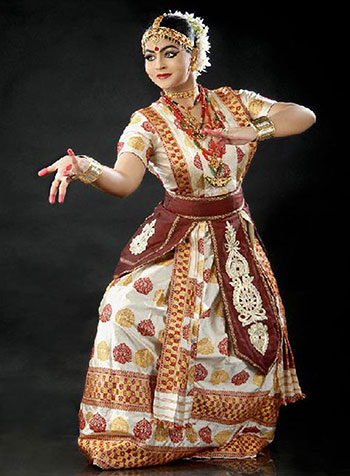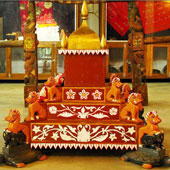The Satriya dance form of Assam has developed in the Neo Vaisnavite monasteries, which is characteristically religious and achieved the status of Classical dance in India. To propagate the ideas of NeoVaisnavism, Sankardeva inscribed the worship songs in the form of Kirtana, Dramas, in the form of Bhaona, which depicts the events from the classical scriptures Mahabharata, Ramayana, and Bhagavata.
The costume of Sattriya dance is primarily of two types: the male costume comprising the dhoti and chadar and the pagri (turban) and the female costume comprising the ghuri, chadar, and Kanchi (waist cloth). Traditionally the costumes were of white or raw silk color with red, blue, and yellow for specific dance numbers. In earlier times, velvet and satin materials were mostly used for the costumes.
Pat, silk produced in Assam derived from the mulberry plant and muga silk is also used in preparing the dance costume. Intricate local motifs like Kingkhap, Miri, Kalka are seen. The geometric and linear designs emphasize the technical skills of the weavers. The simplest floral motif found is a small circle or dot with short radiating lines on all sides. Big, bold flowers in stylized and geometric forms used singly as a unit in the design are often found in the textiles. Many animal motifs like a butterfly, peacocks, elephants, tigers, fish, etc. are also adopted in stylized form. Charai (birds) in general, mora-charai (peacock), hanh (ducks and swans) are common motifs in the textile design. Peacocks, ducks, and swans are regarded as sacred motifs by the Assamese Hindus.



